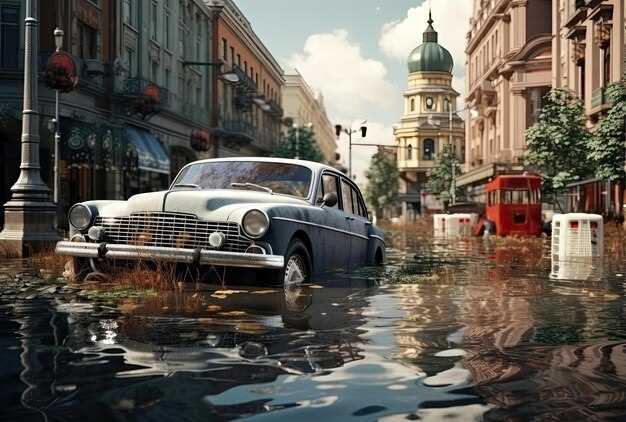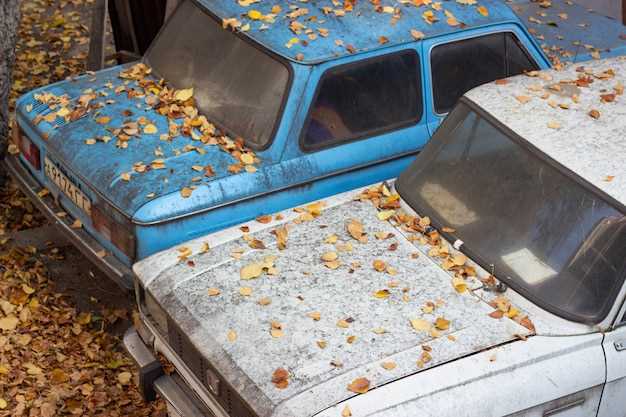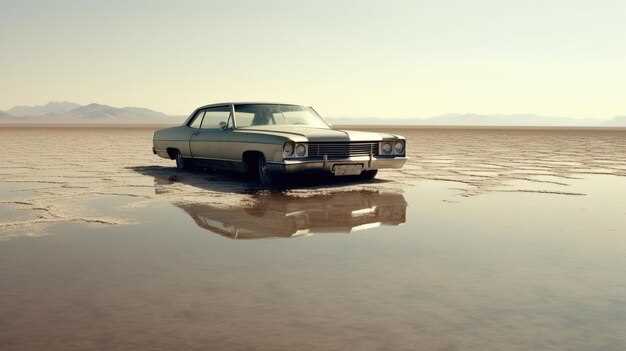
Water damage is a significant concern for collectors and restorers of historic vehicles, particularly in the aftermath of severe flood events. The exposure to water can lead to a range of problems that not only threaten the aesthetic appeal of these vehicles but also compromise their structural integrity and functionality. The effects of water damage can be both immediate and long-lasting, making it essential for vehicle owners to conduct thorough inspection processes after any incident involving substantial water exposure.
When historic vehicles are subjected to flooding, the potential for damage encompasses various components, from the engine and electrical systems to upholstery and paint finishes. Even a minor amount of water can cause corrosion and mold growth, which can be detrimental to the vehicle’s longevity. Therefore, understanding the specific impacts of water damage is critical for preservation efforts, guiding collectors and experts in assessing the extent of necessary repairs and restorations.
As more historic vehicles are at risk due to climate change and the increasing frequency of extreme weather events, the importance of preventive measures cannot be overstated. Owners of these irreplaceable machines must be proactive in their maintenance routines and restoration practices to mitigate the negative effects of potential floods. By recognizing the risks associated with water damage, the historic vehicle community can better safeguard these treasures for future generations.
Assessment Techniques for Water-Damaged Historic Cars
Assessing water-damaged historic vehicles requires a systematic approach to determine the extent of the flood impact. First, professionals should conduct a visual inspection to identify obvious signs of waterlogging, such as rust formation, mold, or water stains in the interior and exterior of the vehicles. This initial assessment lays the groundwork for a more thorough evaluation.
Hydrometer Testing is essential for evaluating the moisture levels in materials that comprise the vehicle. Using this device, restorers can quantify the amount of water retained in various components, such as wood, upholstery, and insulation. This data helps in understanding whether the vehicle can be salvaged or if parts need replacement.
Electrical System Inspection is critical given the vulnerability of historic vehicles’ wiring systems to water exposure. Technicians should examine the condition of electrical connectors, fuses, and circuits. Testing the battery and alternative components for corrosion or damage is necessary to assess the functional integrity of the vehicle.
Engine and Mechanical Components Evaluation is also key. Professionals should check the oil quality and transmission fluid for contaminants that indicate water intrusion. The engine crankcase should be examined for signs of emulsification, revealing potential flooding of the internal systems.
Documentation of Findings is crucial throughout the assessment process. Detailed records of the observed damage, identified issues, and specific mitigation steps taken help to track restoration progress and ensure transparent communication among stakeholders.
By employing these assessment techniques, restorers of water-damaged historic vehicles can effectively gauge the condition of the car post-flood, ultimately guiding the restoration process while preserving its historical value.
Restoration Challenges After Flood Exposure

Vehicles exposed to floodwaters face a myriad of restoration challenges that are crucial to address for the preservation of their historical significance. The first step in the restoration process is a thorough inspection of the vehicle. This inspection helps to identify visible and hidden damage that may have occurred due to prolonged exposure to water.
One of the primary issues is the corrosion of metal components. Floodwaters, often containing corrosive materials, can lead to rapid oxidation of vehicle parts, compromising structural integrity. Restorers must meticulously evaluate all metal sections, including the chassis, body panels, and undercarriage, to ensure that any rust or deterioration is addressed.
Another challenge lies in the electrical systems. Water exposure can cause significant damage to wiring, connectors, and electronic components, which are essential for the vehicle’s operation. Restoration experts need to perform comprehensive testing and potentially replace corroded parts to restore functionality. This often involves sourcing rare electrical components, posing additional constraints for those working on historic vehicles.
Interior restoration is equally challenging. Upholstery, carpeting, and other materials can become moldy and must be replaced if they are not salvageable. Furthermore, wood details often used in classic vehicles may warp or swell when exposed to moisture, complicating the restoration process.
Finally, the integrity of paint finishes typically suffers from flood exposure. Water can lead to blistering, peeling, or discoloration, necessitating extensive repainting work. The restorer must ensure that the new paint adheres properly and matches the original color and sheen, which can be difficult when dealing with rare or unique paint formulas.
In conclusion, restoring historic vehicles after flood exposure presents numerous challenges that require skilled assessment and intervention. Each aspect of the restoration process affects not only the vehicle’s performance but also its authenticity, making it crucial for restorers to approach each project with a comprehensive understanding of the damage and the necessary restorations.
Preventive Measures for Waterlogged Vehicle Preservation

Preserving historic vehicles requires a proactive approach, especially in areas prone to flooding or excessive moisture. Implementing preventive measures can significantly reduce the risk of water damage. Here are some essential strategies for maintaining vehicles susceptible to waterlogging:
- Regular Inspection:
- Conduct routine checks for signs of rust, corrosion, or moisture accumulation.
- Inspect seals and gaskets for leaks that could allow water ingress.
- Look for signs of previous water exposure, such as water stains or mold growth.
- Storage Solutions:
- Store vehicles in elevated locations to minimize flood risk during heavy rains.
- Use waterproof covers specifically designed for classic vehicles.
- Ensure storage facilities have proper drainage systems to divert water away.
- Maintenance of Drainage Systems:
- Regularly clean and maintain the vehicle’s drainage channels to ensure proper function.
- Install additional drainage solutions in the storage area to manage water flow.
- Sealing and Protection:
- Apply anti-corrosion treatments to vulnerable areas, including undercarriage and wheel wells.
- Use waterproof lubricants on moving parts to prevent rust formation.
- Emergency Preparedness:
- Create an emergency response plan for unexpected flooding events.
- Equip the storage area with necessary tools and materials for quick vehicle evacuation.
By implementing these preventive measures, owners of historic vehicles can safeguard against the damaging effects of water exposure and ensure their beloved automobiles remain in optimal condition.




